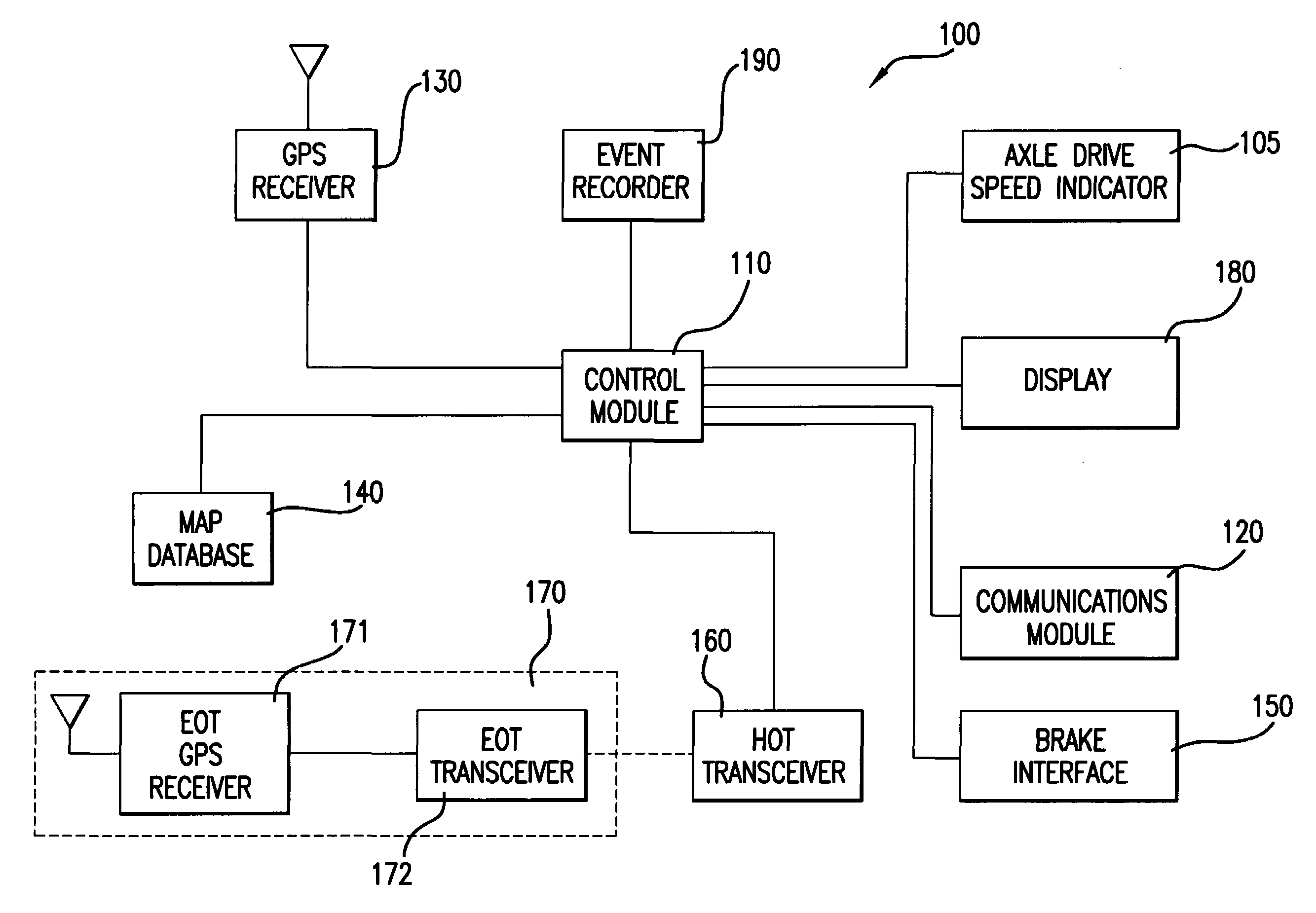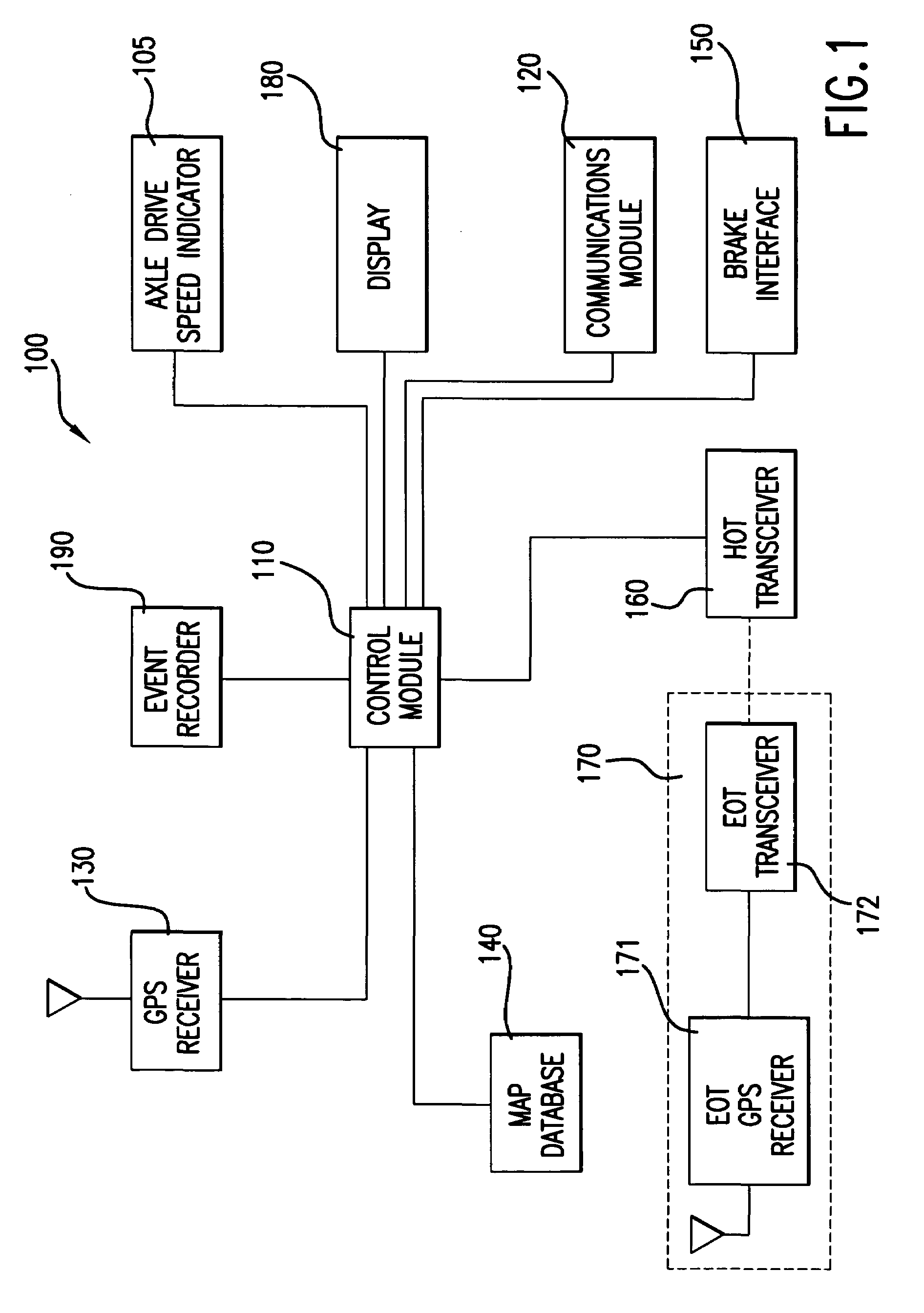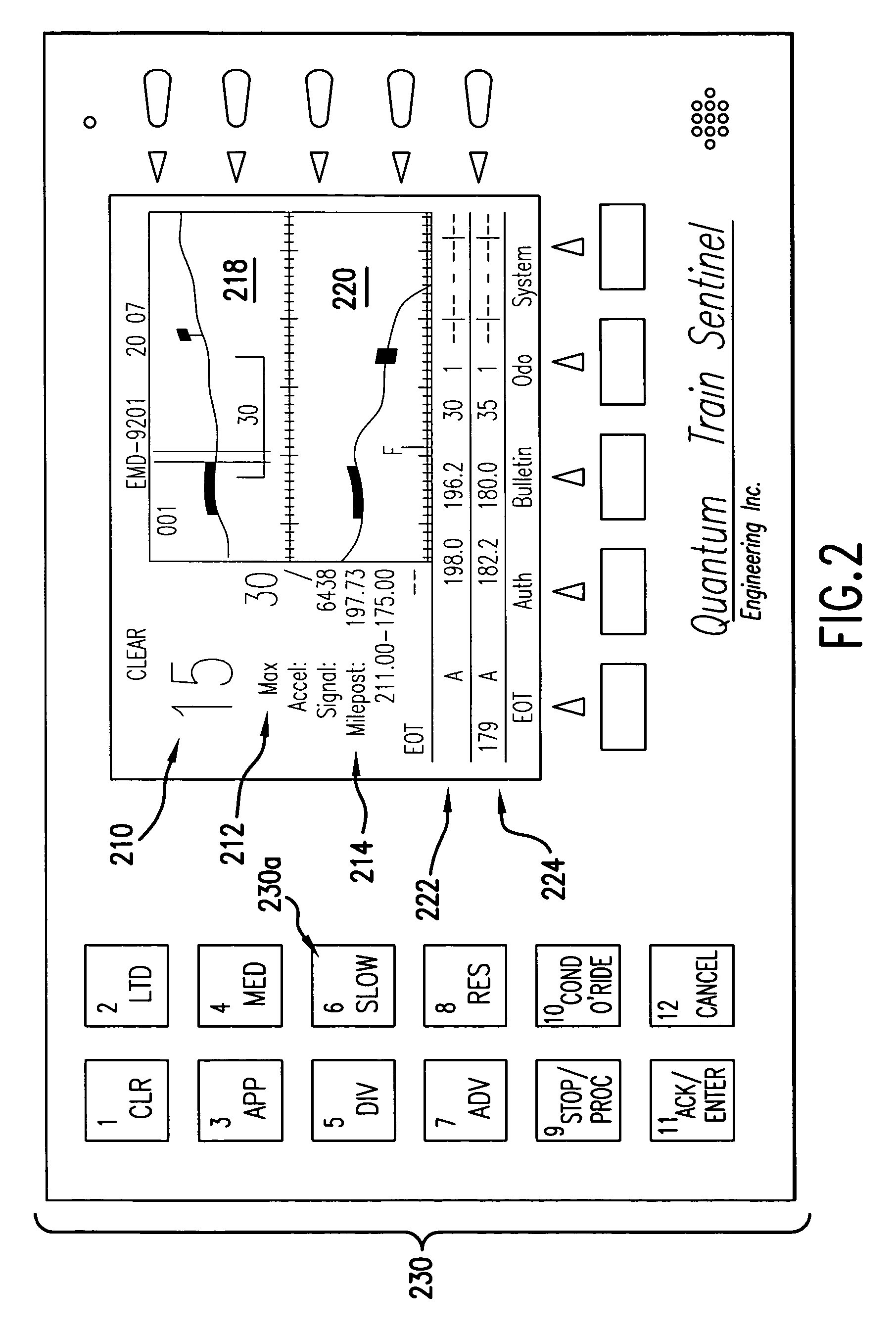Train control system and method of controlling a train or trains
a technology of train control and control system, applied in the field of railroads, can solve the problems of track warrants, complicated and time-consuming procedures, and the inability to control the movement of trains in a modern environment both in the train yard and on the main lin
- Summary
- Abstract
- Description
- Claims
- Application Information
AI Technical Summary
Benefits of technology
Problems solved by technology
Method used
Image
Examples
Embodiment Construction
[0029]The present invention will be discussed with reference to preferred embodiments of train control systems. Specific details, such as specific algorithms and hardware, are set forth in order to provide a thorough understanding of the present invention. The preferred embodiments discussed herein should not be understood to limit the invention.
[0030]Referring now to the drawings, wherein like reference numerals designate identical or corresponding parts throughout the several views, FIG. 1 is a logical block diagram of a train control system 100 according to the present invention. The system 100 includes a control module 110, which typically, but not necessarily, includes a microprocessor. The control module 110 is the center of the train control system and is responsible for controlling the other components of the system. Connected to the control module is a communications module 120. The communications module is responsible for conducting all communications between the system 10...
PUM
 Login to View More
Login to View More Abstract
Description
Claims
Application Information
 Login to View More
Login to View More - R&D
- Intellectual Property
- Life Sciences
- Materials
- Tech Scout
- Unparalleled Data Quality
- Higher Quality Content
- 60% Fewer Hallucinations
Browse by: Latest US Patents, China's latest patents, Technical Efficacy Thesaurus, Application Domain, Technology Topic, Popular Technical Reports.
© 2025 PatSnap. All rights reserved.Legal|Privacy policy|Modern Slavery Act Transparency Statement|Sitemap|About US| Contact US: help@patsnap.com



